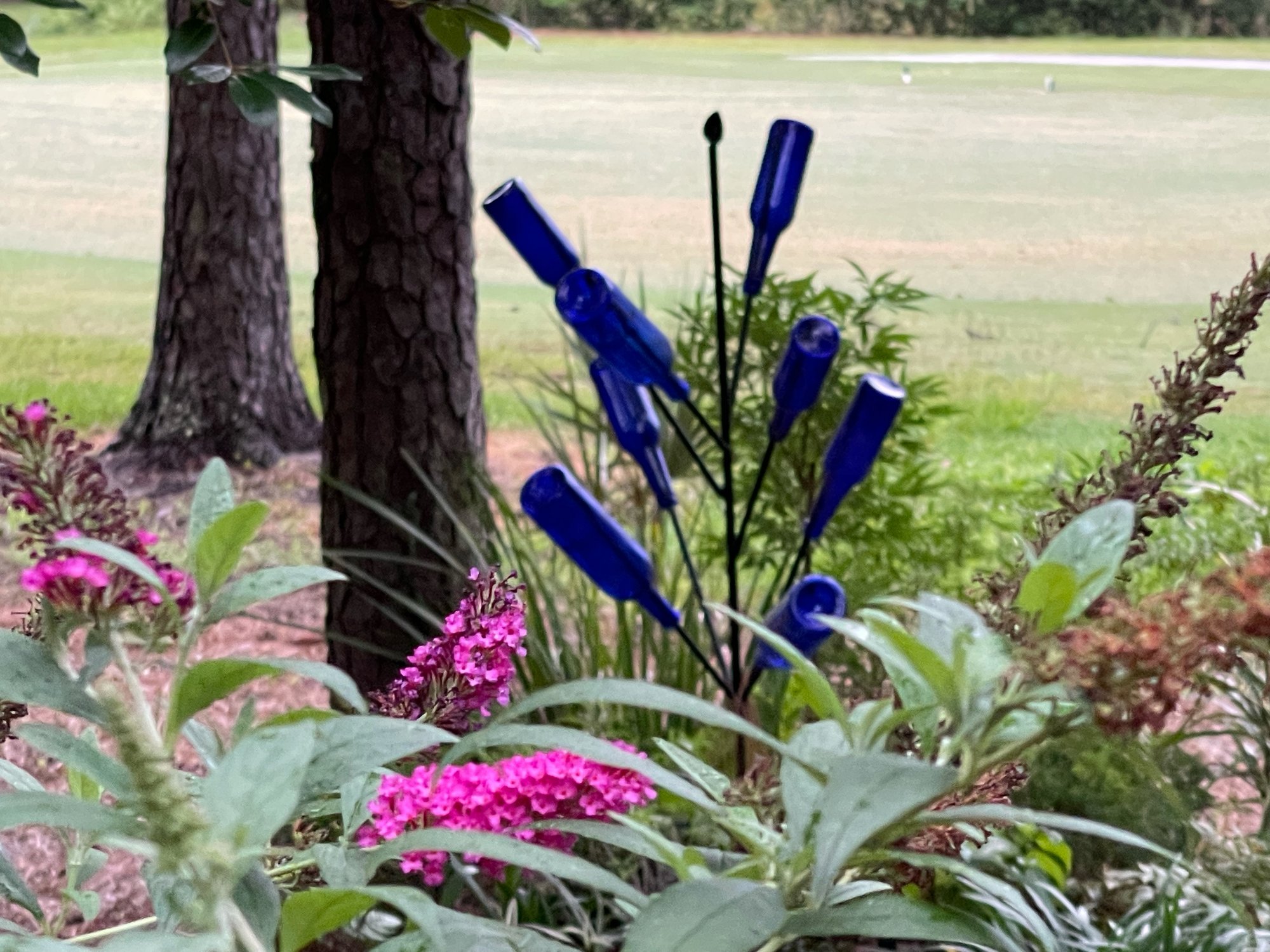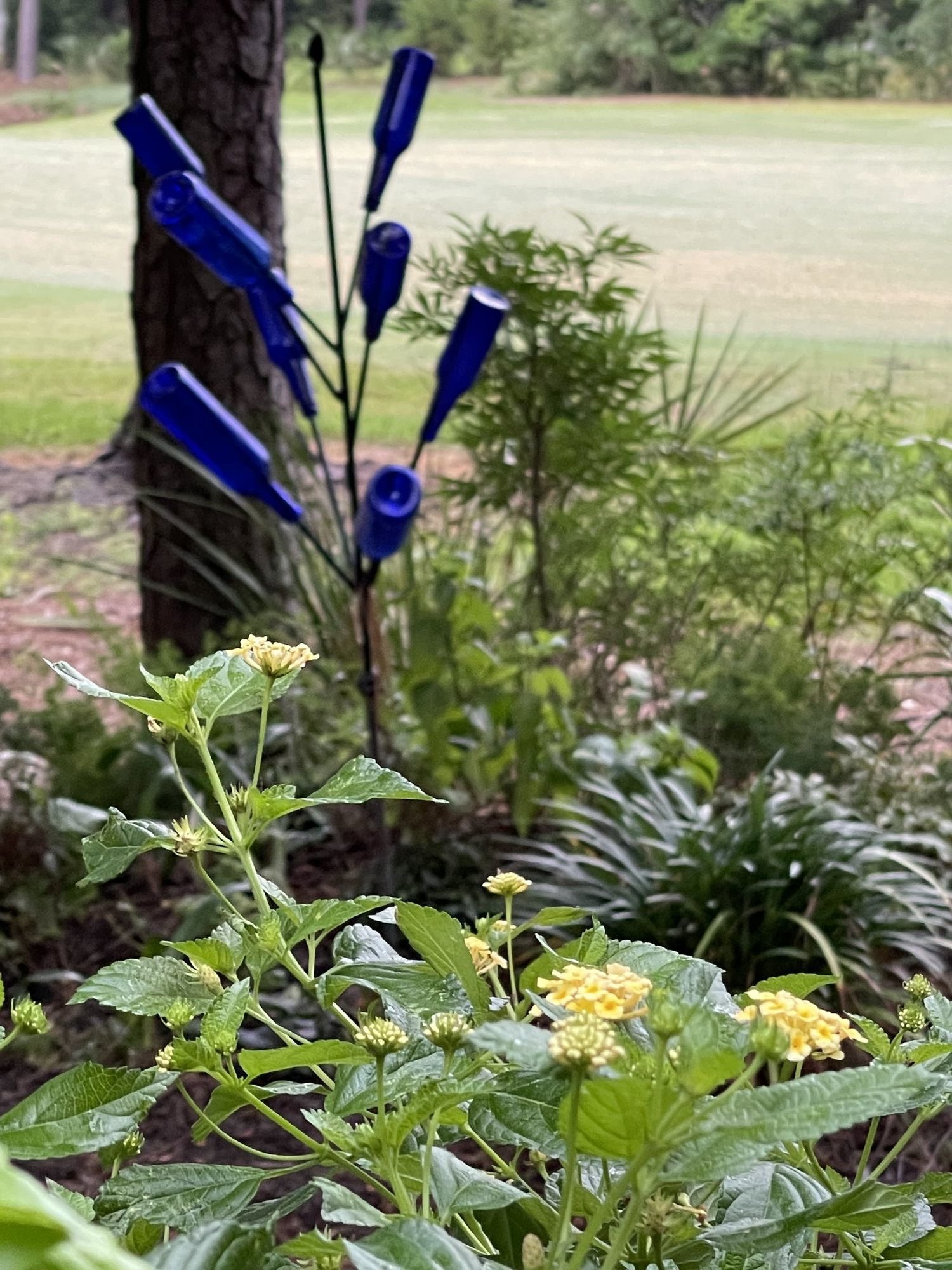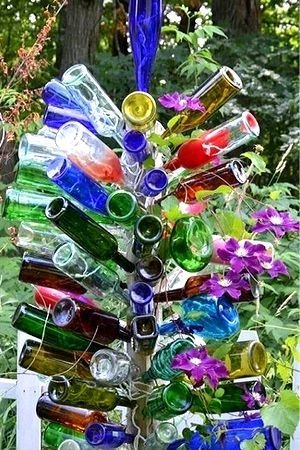
Bottle trees are one of the many unique sights in the South. You'll spot them in areas that make up the old South, particularly in states like Georgia, Mississippi, the Carolinas, and Virginia.
As a Southern tradition, bottle trees are always made from blue glass bottles (these could be wine or beer bottles) one saves over the course of several years. The bottles are placed over the branches of a dead tree or rod that stick upright out of the ground.
bottles are placed over the branches of a dead tree or rod that stick upright out of the ground.
Today, you will find bottle trees in gardens across North America, mainly because of their unique beauty. You can even find them in garden shows around the world.
People have been creating these trees in Southern states for hundreds of years. However, their history dates back much further in time. The folklore that surrounds the origin of bottle trees is truly fascinating.
Glass bottles began circulating through Africa, Egypt, and Mesopotamia in 1600 BC. The belief that spirits could live in these bottles quickly followed.
The hope was that by hanging the bottles in a tree, evil spirits would find their way into the wine bottles and become stuck. Since they wouldn't be able to find their way back out again, they would remain in the bottle until morning. The morning sun would then destroy the spirits.
The folk art tradition of creating bottle trees carried over to the people of the Congo starting in the ninth century. African people brought the tradition of bottle trees with them when the slave trades began in the 17th century.
During this time, African slaves on Southern plantations began placing bottles on trees. They commonly used crepe myrtle trees, a tradition that may be connected to the myrtle tree's significance to slaves in the Bible. In the Old Testament, the crepe myrtle tree is a reoccurring image that represents freedom and escape from slavery.
The creation of bottle trees during this section of history rooted the tradition in the United States' Southern culture.
Blue, specifically Cobalt Blue, is by far the most popular color for bottle trees. The belief is that these particular bottles have healing powers. The legend says that people tend to associate the color blue with ghosts and spirits, which makes it an even more popular color for these trees.
Today, blue remains the most dominant color for bottle trees. However, bottle trees often have multiple color bottles.
You can still see many of these blue bottle trees as yard art in gardens throughout the South. They are a stark reminder of a tradition that has carried on for centuries, and that still uniquely represents the American South.
Article written by: Molly Skaggs for Wide Open Country, Image 1 & 2 are from my own garden (Allison Cobb), Image 3 from Container Water Gardens
Posted by The Cobb Group on

Leave A Comment